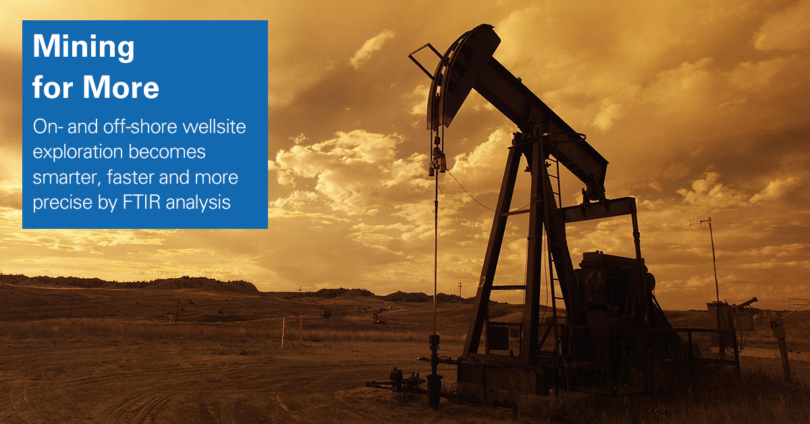Mineral analysis and other geological studies are important for the extraction of natural resources such as crude oil and natural gas. Therefore, a lot of energy is put in wellsite or drillsite analysis.
Currently optical techniques are widespread, but cumbersome, inefficient and inflexible. In that regard, FTIR is a a game changer when talking wellsite analysis and allows the characterization of drill cuttings in near real time.
Why use FTIR?
FTIR is a simple technique for the identification and quantification of almost any material. This means, it provides a wholesome chemical analysis of minerals and other compounds.
By correlating this chemical information with the drilling depth, you get a chemical profile, that allows you to assess the quality and value of the wellsite.
How does it work?
Typically, certain minerals are good indicators for oil and gas deposits. By observing the change in minerals, e.g. carbonates to clays, you are able to assess the location of the reservoir base.
The Australian company Ana-Min uses the ALPHA FTIR spectrometer to provide mobile geo-analytical services to on- and off-shore drilling companies, thus improving the exploration of conventional oil & gas, shale gas, shale oils or tight sands.
By the way, FTIR and Ana-Min support more than just the search for deposits. The entire project lifecycle is enhanced by infrared spectroscopy, from exploration to production.
And what are the Benefits?
- It’s fast. Ana-Min claims to analyze 700m of drilled intersection in just two days, while providing an exceptional geo-chemical profile. (Reservoir base was marked with ~2 meters accuracy)
- It’s precise. SGS Australia recently published a report how they used FTIR to quantify mineral content in rocks with very high accuracy.
- It’s easy. Measuring FTIR is not exactly rocket science. Today’s systems offer automated workflows, touch controls and high performance in portable, compact packages.
The Conclusion
FTIR is a great tool for mineral analysis and its applicational diversity is ever expanding! There is still a lot of untapped potential and Bruker supports its customers in creating new opportunities.
You’ve got a question? Don’t hesitate and contact us through our website or take a look at our FTIR and Raman applications on this blog!








